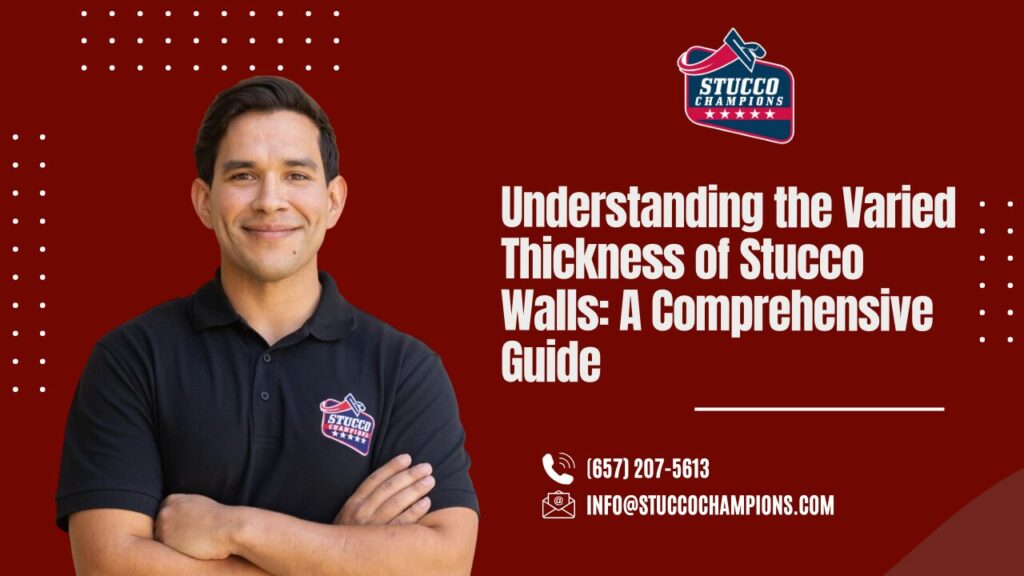Three Coat Stucco System
The three-coat stucco system, a prevalent method in stucco application, offers an intriguing combination of durability and aesthetic versatility. In this comprehensive guide, we’ll delve into the nuances of this system, its components, and its application process. By the end of this article, you’ll have a thorough understanding of the three-coat stucco system, its advantages and limitations, cost implications, and maintenance requirements.
Understanding the Basics: What is Three Coat Stucco?
Three-coat stucco refers to a stucco system comprising three primary layers: the scratch coat, the brown coat, and the finish coat. Each layer plays a crucial role in ensuring the system’s durability, strength, and visual appeal. Typically, the overall thickness of these layers ranges from 7/8″ to 1″, making it one of the most robust stucco systems available.
The Layers of the Three Coat Stucco System Explained
Lath Layer: The Foundation While not part of the three coats, the lath layer is essential. It consists of water-resistant paper and wire mesh, providing a foundational layer for stucco.
Scratch Coat: The First Layer The scratch coat, applied directly over the lath, is a mixture of cement, sand, and water. It’s typically 3/8″ – 1/2″ thick. Horizontal scratch marks are made in this coat to provide a better bonding surface for the subsequent brown coat.
Brown Coat: The Second Layer Following the scratch coat, the brown coat is applied. Also made of cement, sand, and water, it’s smoothed out to provide a more even surface for the final layer.
Finish Coat: The Final Touch The finish coat is the decorative and visible layer of the system. It comes in various textures and colors, providing not just aesthetic appeal but also an additional protective layer.
The Application Process: Techniques and Tools
Mixing the Material Contrary to the misconception that all stucco requires on-site mixing, many modern stucco mixtures come pre-mixed. However, for the three-coat system, on-site mixing using a drill or mortar mixer is standard practice.
Applying the Coats The coats can be applied either by hand using tools like a hock and trowel or sprayed on with a mortar pump. Each layer requires specific techniques for optimal results.
Drying and Curing Proper curing is vital for the stucco to achieve its full strength and durability. This involves a controlled drying process to prevent cracking and ensure even strength distribution.
Comparing Stucco Systems: Cost and Considerations
When considering different siding options, the cost is a significant factor. The three-coat stucco system, while offering numerous benefits, tends to be more labor-intensive and costly compared to other systems. However, its durability and aesthetic appeal often offset these initial costs in the long run.
Pros and Cons: A Balanced View
Advantages The three-coat system is renowned for its strength, durability, and fire resistance. Its proven track record over the years is a testament to its reliability and robustness.
Disadvantages The primary drawbacks of this system are its labor intensity and the skill level required for application and repairs. Additionally, ongoing maintenance requirements should be considered when choosing this system.
Maintenance and Care for Longevity
Maintaining a three-coat stucco system involves regular inspections and prompt repairs of any cracks or damage. While it’s durable, neglecting maintenance can lead to issues down the line.
Choosing a Professional: Importance of Expertise
Given the technicality and skill required for applying a three-coat stucco system, choosing a qualified and experienced professional is crucial. Their expertise ensures the longevity and performance of the stucco.
Is the Three Coat Stucco System Right for You?
The three-coat stucco system offers a blend of durability, aesthetic appeal, and fire resistance, making it an excellent choice for many. However, it’s essential to weigh its higher initial cost and maintenance requirements against these benefits. For those considering this system, seeking professional advice and further resources can aid in making an informed decision.
Last week, we shared A Comprehensive Guide to Stucco Tools: Expert Insights and Practical Advice, detailing the essential tools needed for a professional stucco finish. If you’re looking to upgrade your toolkit or learn the best practices for stucco work, don’t miss this valuable resource!
—




